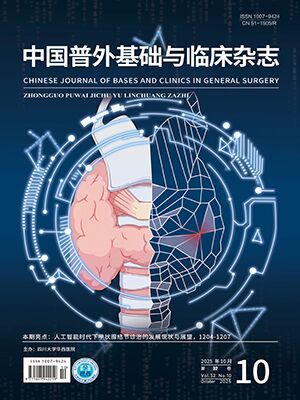【Abstract】ObjectiveTo investigate the inhibitory effects and the mechanisms of octreotide (OCT) on the growth of hepatocellular carcinoma (HCC).
MethodsBel7402 HCC cells were studied for proliferative ability by MTT assay, morphology by light microscopy, adhesive and invasive ability by cell adhesion and “wound strack” experiments. Immunofluorescence flow cytometry was used for study of cMet expression and cell cycle as well. Furthermore, the effects of OCT on tumor growth metastasis were investigated in nude mice with implanted HCC. The expression of cMet in implanted tumor cells was studied by immunohistochemistry.
ResultsWith OCT treatment, the proliferative ability of Bel7402 cells and cell morphology didn’t change. The adhesive and invasive ability decreased compared with no OCT treatment cells (P<0.05). The ratio of G0/G1 cells increased markedly (P<0.05). The proportion of Bel7402 cells expressing cMet was reduced significantly (P<0.05). The growth of implanted tumor was inhibited with OCT treatment (P<0.05). The intensity of cMet expression in OCT group was remarkably weaker than that in control group. In addition, no recurrence and metastasis was found in OCT group 7 weeks after curative resection of xenografts, while 3 cases in controd group were observed to have the recurrence and metastasis. The intensity of cMet immunolabeling in the metastatic tumors was higher than that in xenografts of control group, but the difference was not significant.
ConclusionOCT inhibits the growth of HCC by downregulation of cMet.
Citation: HUA Yunpeng,LAI Jiaming,LIANG Lijian,HUANG Jiefu.. Octreotide Inhibits the Growth of Hepatocellular Carcinoma Through Down-Regulation of cMet. CHINESE JOURNAL OF BASES AND CLINICS IN GENERAL SURGERY, 2006, 13(2): 158-162. doi: Copy
Copyright © the editorial department of CHINESE JOURNAL OF BASES AND CLINICS IN GENERAL SURGERY of West China Medical Publisher. All rights reserved




